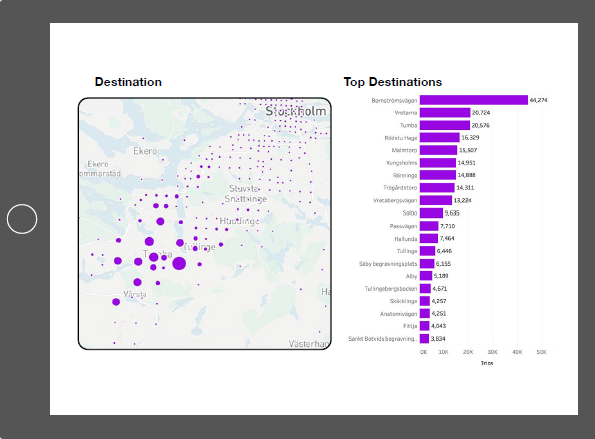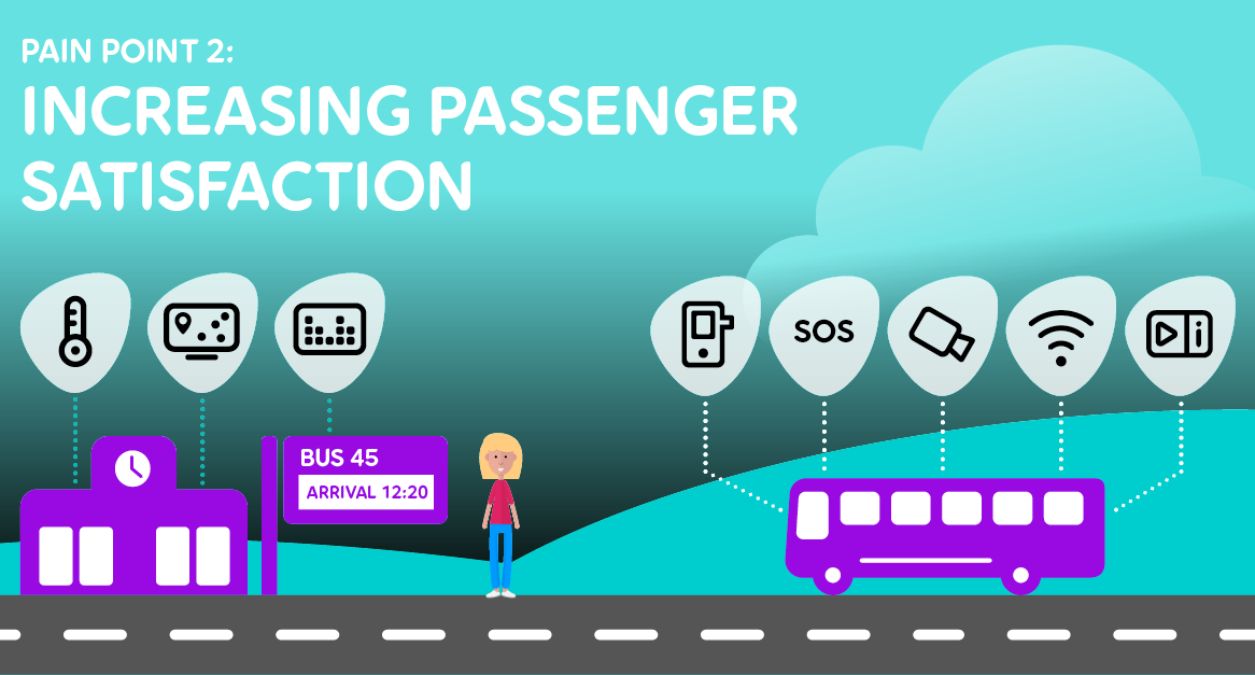Public Transport Pain Point 2: Increasing passenger satisfaction
The variable conditions in which public transport operates make it impossible to keep all passengers happy all of the time. There will always be unexpected traffic jams and mechanical breakdowns. But operators can do a lot to prevent and mitigate these obstacles.
This is an extract from: Digitalization of Public Transport in the Nordics & Baltics.
The key pain points to improve customer satisfaction:
"We work with both tendered traffic and with coaches [...] The tendered traffic is much more regulated, which might slow down the development of smart solutions. With our coaches, we are able to come up with any new solution and test it easily and quickly. For instance, we have developed our own system for booking and infotainment” - CIO, Nordic bus operator
DIGITAL SOLUTIONS TO INCREASE CUSTOMER SATISFACTION
Mobile devices have created new possibilities for passengers to entertain themselves or work while travelling. Many other digital solutions address other causes of passenger dissatisfaction.
ONBOARD WIFI AND INFOTAINMENT
Keeping passengers informed and entertained as well as being able to work efficiently on their commute can improve their experience enough for them to decide not to take the car. The foundation for this experience is onboard WiFi, which enables passengers to use their mobile phones onboard without having to use up their own data. Infotainment systems deliver context-relevant information to passengers. This can include current traffic status, weather reports, community information and news. In some cases, the content is provided with advertising that can generate new revenue streams. Personalized alerts delivered via the passenger’s travel app provide updates on traffic events that may impact their nominated travel itinerary. Some may even recommend the best alternative.
IN-VEHICLE SAFETY & SECURITY
Several digital solutions address in-vehicle safety and security. Some promote safe driving, such as the breathalyzer which prevents the vehicle from starting if alcohol is detected on the driver’s breath. Remote speed alerts warn both the driver and operator if speed limits are exceeded. Driver’s alarms enable the driver to send an alert and the GPS position of the vehicle to relevant authorities at the touch of a button. Onboard camera surveillance can provide a live feed, or an archived record for future reference, of any situations affecting the vehicle. The presence of these cameras can also directly discourage criminal or hostile behavior or vandalism. However, any surveillance of individuals must be implemented with respect for data privacy.
PASSENGER STATIONS AND STOPS
Smart stations and stops can create safer and more inviting environments where it is easier for travelers to interact. This includes smart building services such as temperature and air quality monitoring. Stations can also be equipped with water and gas leakage detection to improve the facility energy usage and reduce risks. Remote camera surveillance can be used to promote safety and deter criminal activity.
Remotely-managed digital signs can provide valuable information to travelers, not just in stations but at all passenger stops along the public transport network. This is also possible for esca-lators, elevators and automated doors in stations. By connecting them, PTOs can be informed of breakdowns and take appropriate action.
“When it comes to benefits of digital solutions, we get much more feedback in a faster and more convenient way than before, through new ways of communication. When everything is in a mobile app, it is easier to structure feedback.”
-Nordic PTA
CROWD FLOW
Crowd movement data can help PTOs to understand and improve the traveler experience in and around stations and stops. At a suburb and street level the data reveal how many people arrive, when and from where. The data can identify areas that people avoid and that may be unsafe or areas with many people who may need services such as washrooms or vending machines. Inside the station, this can be complemented with WiFi measurements to reveal any congestion points.

Cookie notification
Cookies allow us to optimize your use of our website. We also use third-parties cookies for advertising and analytics. Please read our Cookie Policy for more information.

